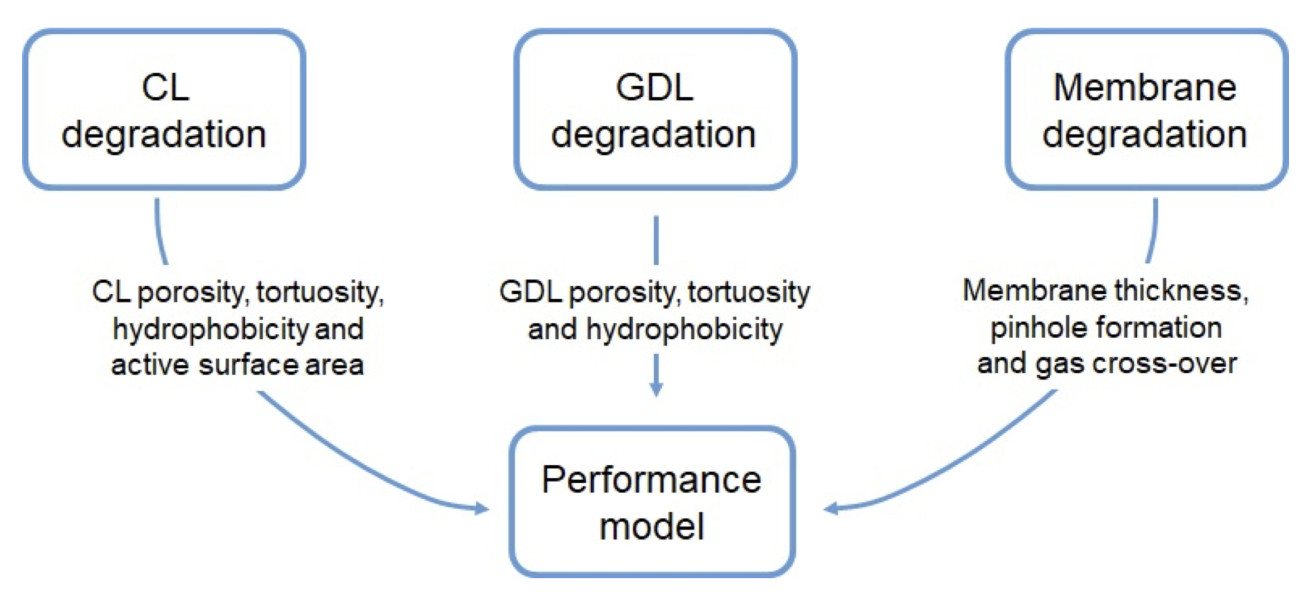Of different fuel cell types, PEM fuel cells show the greatest promise in automotive applications due to their fast start-up and low temperature operation. PEM fuel cells convert hydrogen into electricity with the only by-product being water at an efficiency greater than an internal combustion engine. The widespread commercialisation of PEM fuel cells is currently limited by the two main barriers of cost and durability. The ESE group has a wide spectrum of expertise covering all key aspects of PEM fuel cells. The group has been working on solutions for the fuel cell challenges by innovating in electrocatalysts, fuel cell design and manufacturing, diagnostics and system integration and control, which are underpinned by multiscale modelling.
As part of the ESE group, the Titirici group at the Department of Chemical Engineering particularly focuses on the synthesis of precious-metal-free electrocatalysts and sustainable catalyst supports using various techniques with aims that include improving stability and maintaining high activity for electrochemical reactions in the PEM fuel cell. This group also works on related engineering problems, such as improving the electrochemical interface and testing setups.
Current projects
Recent publications 2020 - to date
Pan, Y., Wang, H. and Brandon, N.P., 2022, A fast two-phase non-isothermal reduced-order model for accelerating PEM fuel cell design development, International Journal of Hydrogen Energy, Vol: 47(91), Pages: 38774-38792.
Pan, Y, Wang, H, Brandon, NP, 2021, Gas diffusion layer degradation in proton exchange membrane fuel cells: Mechanisms, characterization techniques and modelling approaches, Journal of Power Sources, Vol: 513, Pages: 230560.
Jiao K, Xuan J, Du Q, Bao Z, Xie B, Wang B, Zhao Y, Fan L, Wang H, Hou Z, Huo S, Brandon NP, Yin Y, Guiver MD, 2021, Designing the next generation of proton-exchange membrane fuel cells, Nature, Vol: 595, Pages: 361–369.
Boldrin P, Malko D, Mehmood A, Kramm UI, Paul S, Weidler N, Kucernak A, 2021, Deactivation, reactivation and super-activation of Fe-N/C oxygen reduction electrocatalysts: gas sorption, physical and electrochemical investigation using NO and O2, Applied Catalysis B: Environmental, In press
Favero S, Stephens IEL, Titirici MM, 2021, Engineering the Electrochemical Interface of Oxygen Reduction Electrocatalysts with Ionic Liquids: A Review. Advanced Energy and Sustainability Research, Vol: 2(1), Page: 2000062.
Xie B, Zhang G, Jiang Y, Wang R, Sheng X, Xi Fu, Zhao Z, Chen W, Zhu Y, Wang Y, Wang H, Jiao K, 2020, “3D+1D” modeling approach toward large-scale PEM fuel cell simulation and partitioned optimization study on flow field, eTransportation, Vol: 6.
Jorge AB, Jervis R, Periasamy AP, Qiao M, Feng J, Tran LN, Titirici MM, 2020, 3D Carbon Materials for Efficient Oxygen and Hydrogen Electrocatalysis, Advanced Energy Materials, Vol: 10, Page: 1902494.
Wang B, Zhang G, Wang H, Xuan J, Jiao K, 2020, Multi-physics-resolved digital twining of proton exchange membrane fuel cells with a data-driven surrogate model, Energy and AI, Vol: 1, Page: 100004
